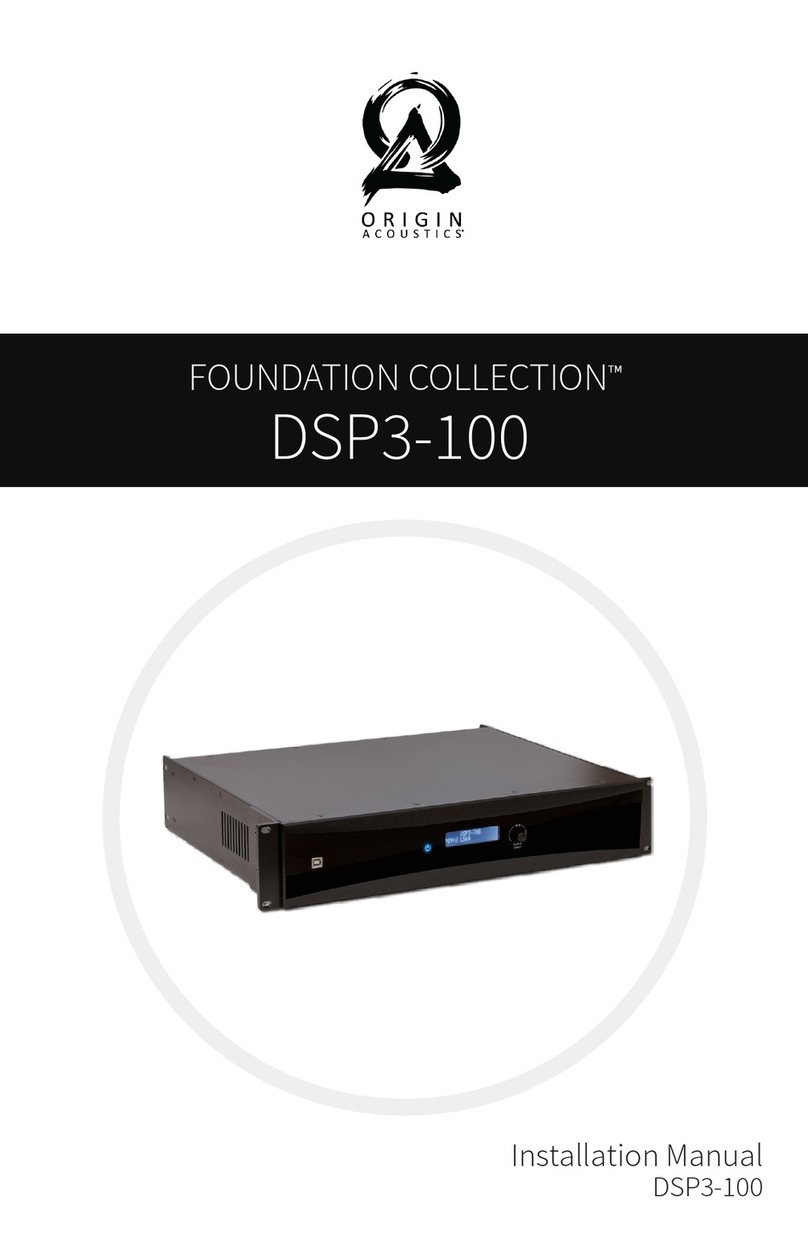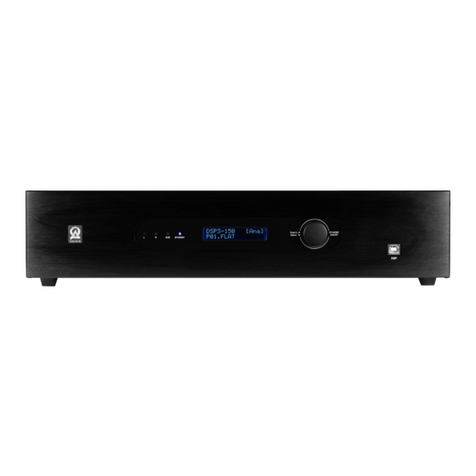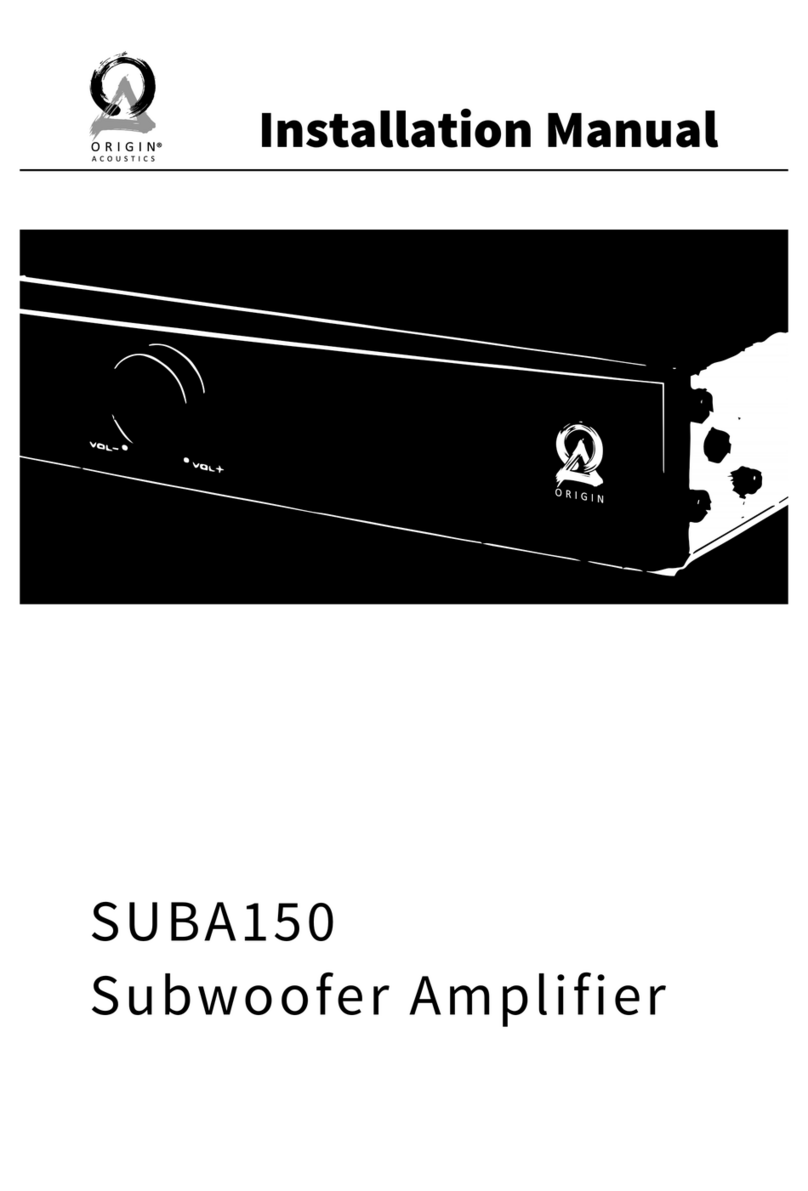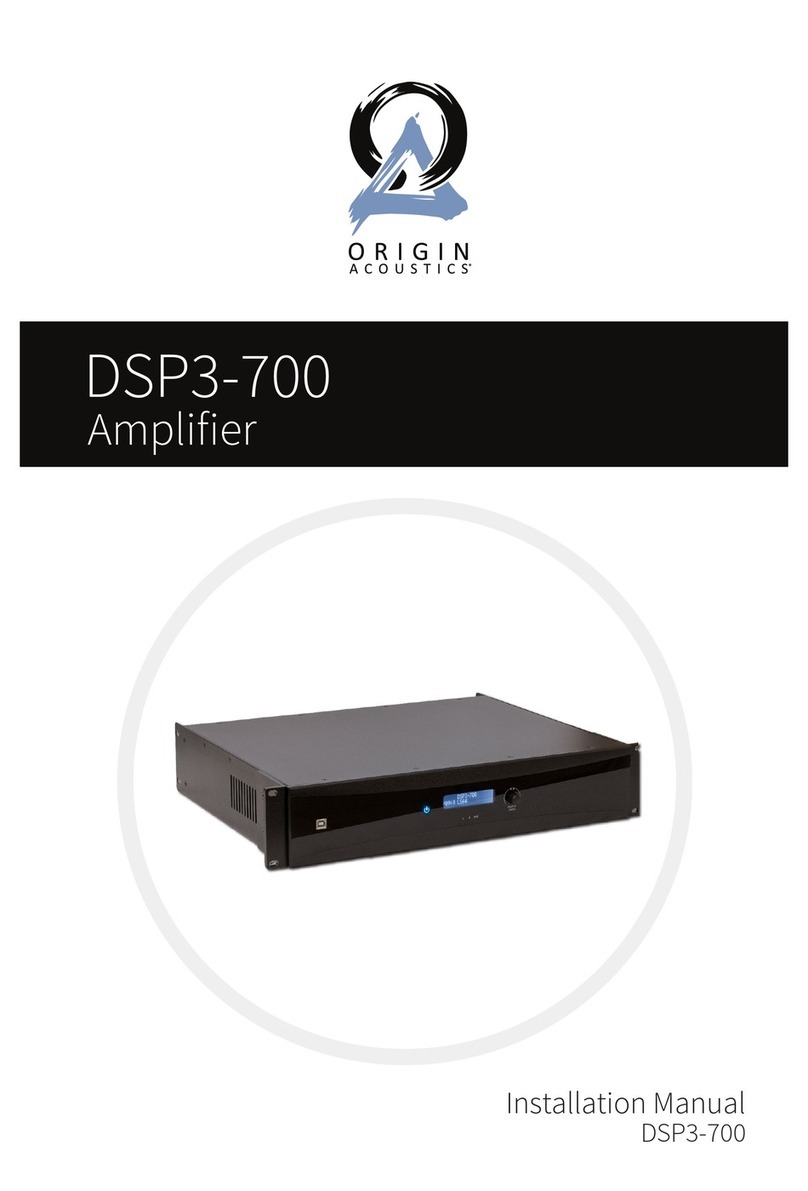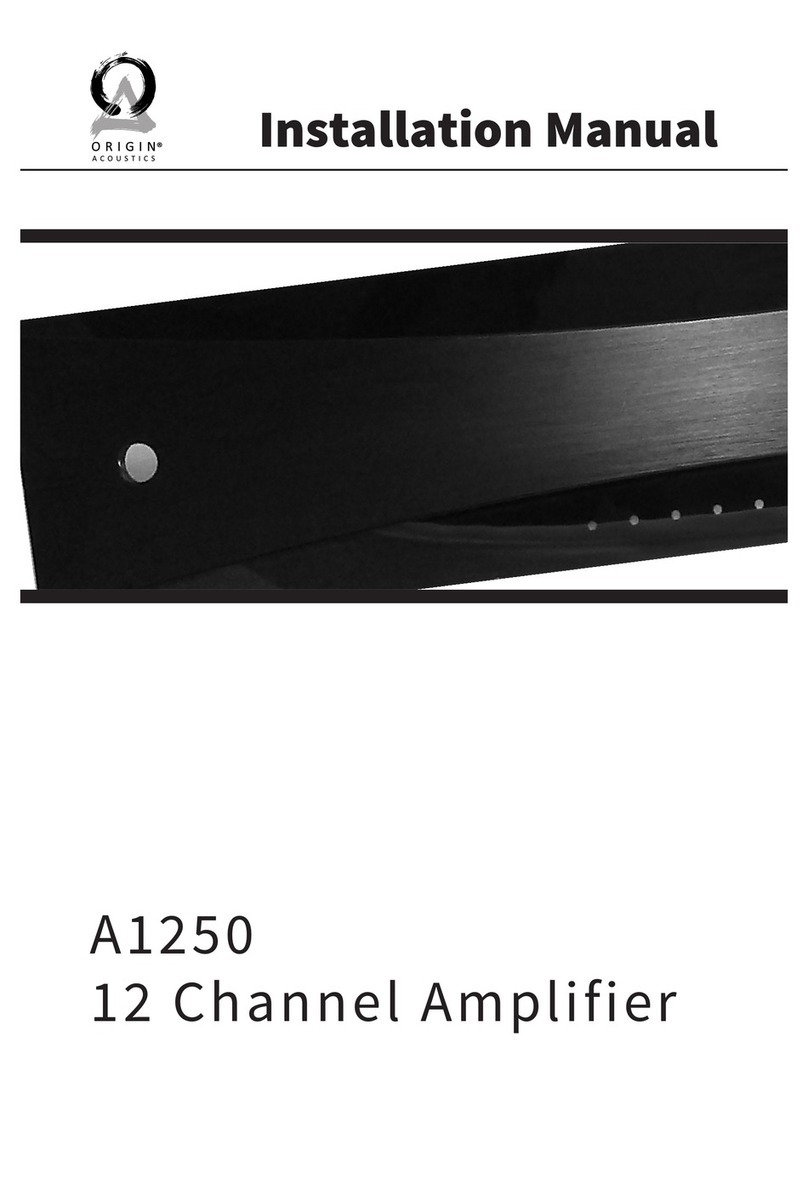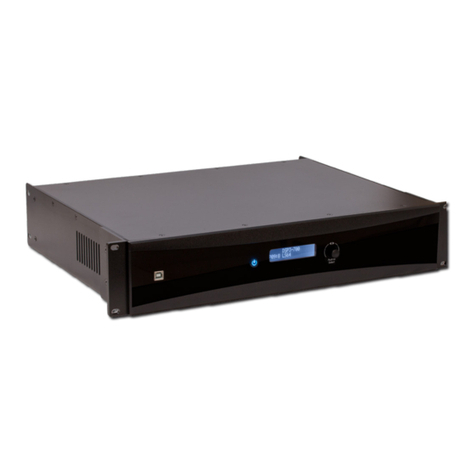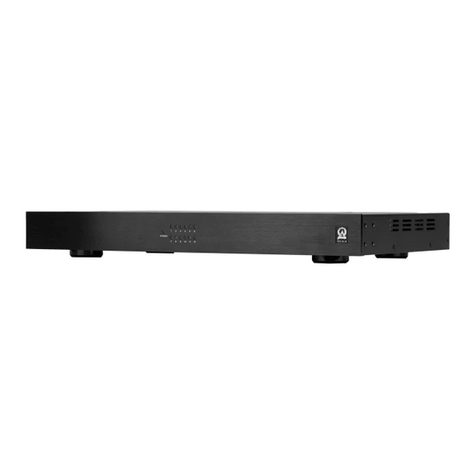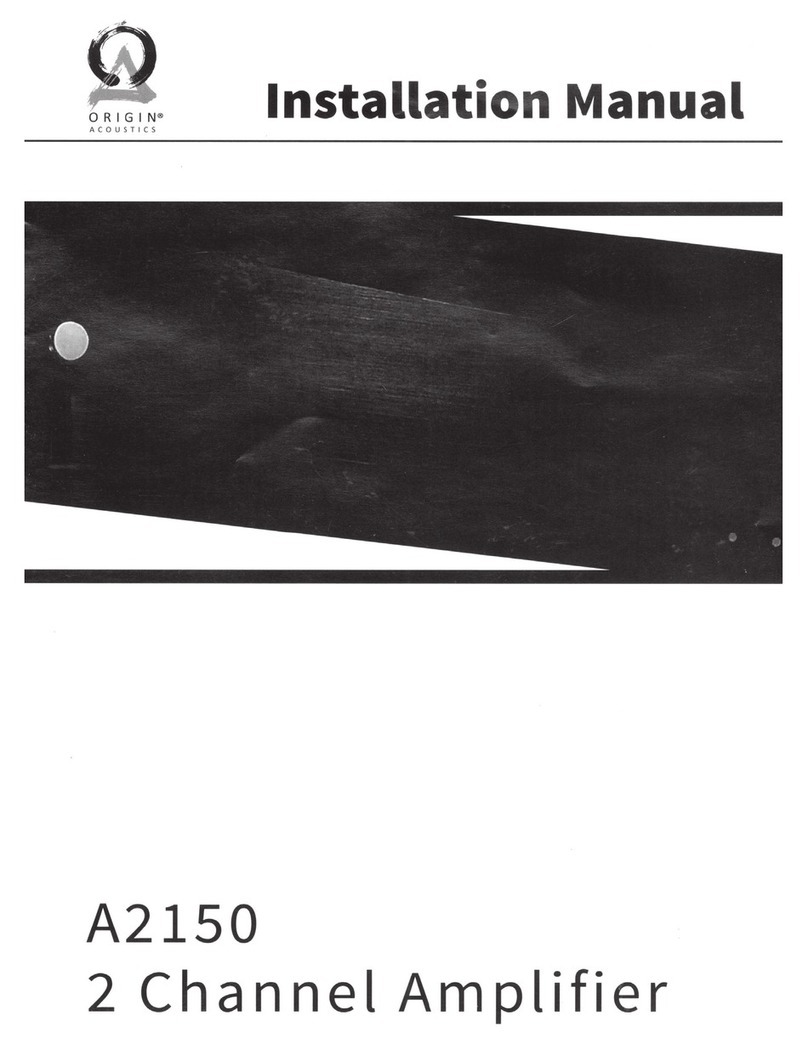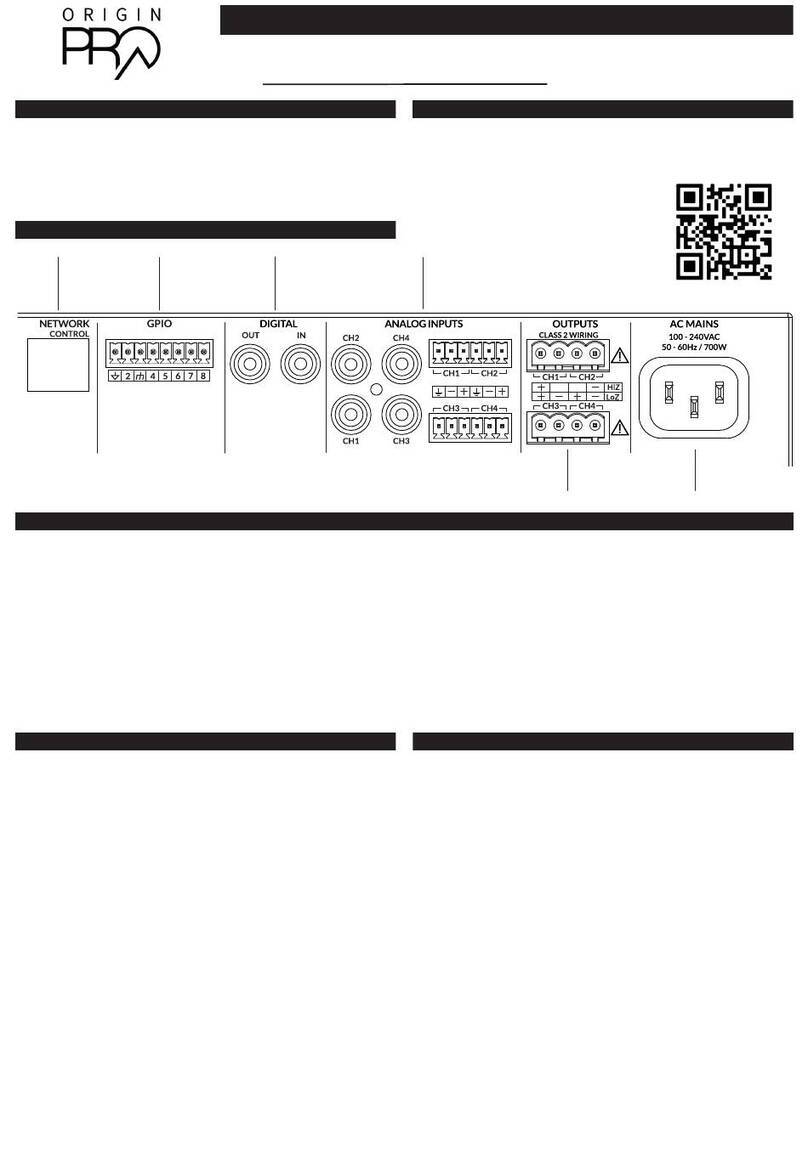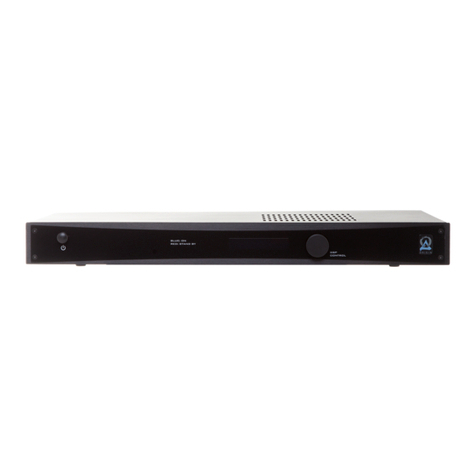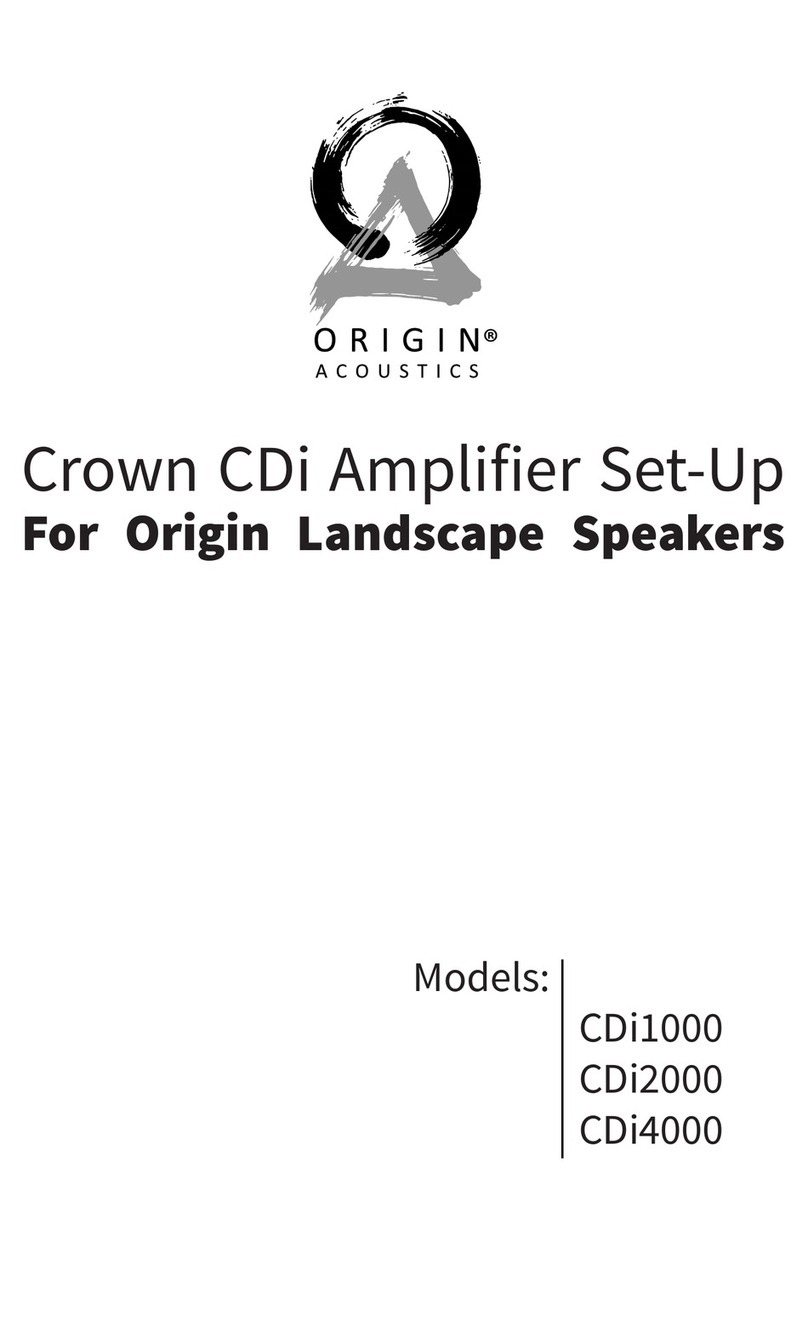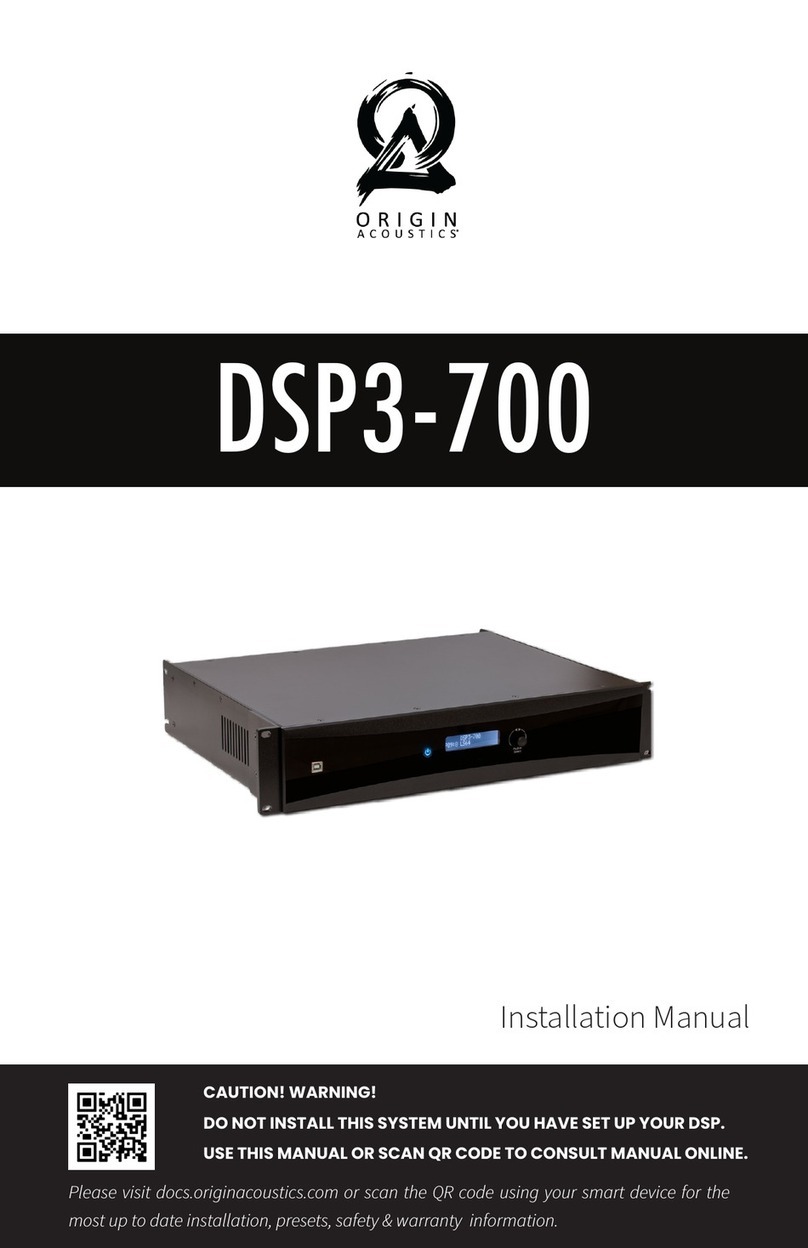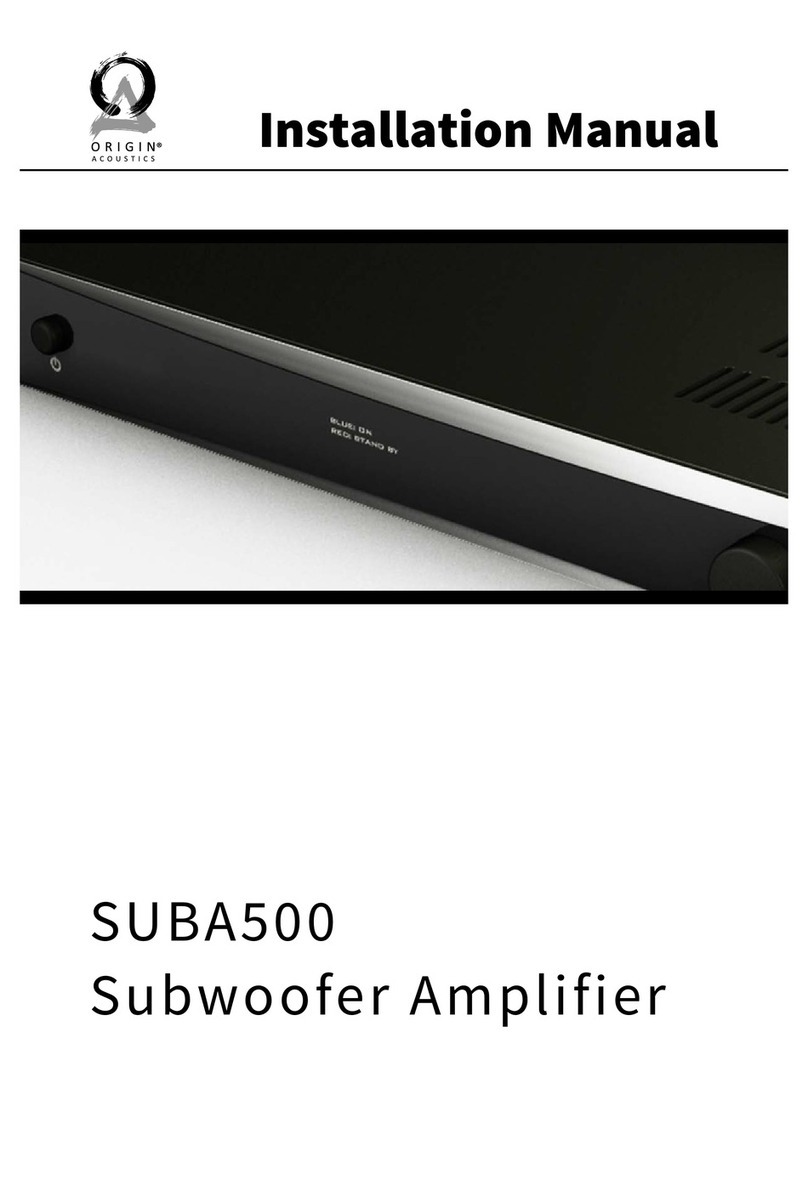
6
SUBA -150 AMPLIFIER INSTALLATION USER MANUAL
Placing the amplifier can have a large impact on performance and longevity.
Please take the following guidelines into consideration:
• Ensure that the unit is in a well-ventilated area that provides adequate cooling.
• A minimum of 5” should be allowed above and below the amplifier for optimum
performance.
• Attach ears to the amplifier if mounting into rack.
• Bottom feet on the amplifier chassis may be removed if necessary.
page | 6
2” MINIMUM OF FREE AIR SPACE BEHIND UNIT
(FOR CABLES AND CONNECTORS)
2” MINIMUM OF FREE AIR SPACE BEHIND UNIT
(FOR CABLES AND CONNECTORS)
5” MINIMUM OF FREE AIR SPACE ABOVE
5” MINIMUM OF FREE AIR SPACE BELOW
3’’ MINIMUM OF FREE AIR SPACE ON SIDE
3” MINIMUM OF FREE AIR SPACE ON SIDE
3” 3”
5”
5”
5” MINIMUM OF FREE AIR SPACE ABOVE
5” MINIMUM OF FREE AIR SPACE BELOW
3” MINIMUM OF FREE AIR SPACE ON EACH SIDE
5”
5”
page | 6
2” MINIMUM OF FREE AIR SPACE BEHIND UNIT
(FOR CABLES AND CONNECTORS)
2” MINIMUM OF FREE AIR SPACE BEHIND UNIT
(FOR CABLES AND CONNECTORS)
5” MINIMUM OF FREE AIR SPACE ABOVE
5” MINIMUM OF FREE AIR SPACE BELOW
3’’ MINIMUM OF FREE AIR SPACE ON SIDE
3” MINIMUM OF FREE AIR SPACE ON SIDE
3” 3”
5”
5”
5” MINIMUM OF FREE AIR SPACE ABOVE
5” MINIMUM OF FREE AIR SPACE BELOW
3” MINIMUM OF FREE AIR SPACE ON EACH SIDE
5”
5”
page | 6
2” MINIMUM OF FREE AIR SPACE BEHIND UNIT
(FOR CABLES AND CONNECTORS)
2” MINIMUM OF FREE AIR SPACE BEHIND UNIT
(FOR CABLES AND CONNECTORS)
5” MINIMUM OF FREE AIR SPACE ABOVE
5” MINIMUM OF FREE AIR SPACE BELOW
3’’ MINIMUM OF FREE AIR SPACE ON SIDE
3” MINIMUM OF FREE AIR SPACE ON SIDE
3” 3”
5”
5”
5” MINIMUM OF FREE AIR SPACE ABOVE
5” MINIMUM OF FREE AIR SPACE BELOW
3” MINIMUM OF FREE AIR SPACE ON EACH SIDE
5”
5”
page | 6
2” MINIMUM OF FREE AIR SPACE BEHIND UNIT
(FOR CABLES AND CONNECTORS)
2” MINIMUM OF FREE AIR SPACE BEHIND UNIT
(FOR CABLES AND CONNECTORS)
5” MINIMUM OF FREE AIR SPACE ABOVE
5” MINIMUM OF FREE AIR SPACE BELOW
3’’ MINIMUM OF FREE AIR SPACE ON SIDE
3” MINIMUM OF FREE AIR SPACE ON SIDE
3” 3”
5”
5”
5” MINIMUM OF FREE AIR SPACE ABOVE
5” MINIMUM OF FREE AIR SPACE BELOW
3” MINIMUM OF FREE AIR SPACE ON EACH SIDE
5”
5”
page | 6
2” MINIMUM OF FREE AIR SPACE BEHIND UNIT
(FOR CABLES AND CONNECTORS)
2” MINIMUM OF FREE AIR SPACE BEHIND UNIT
(FOR CABLES AND CONNECTORS)
5” MINIMUM OF FREE AIR SPACE ABOVE
5” MINIMUM OF FREE AIR SPACE BELOW
3’’ MINIMUM OF FREE AIR SPACE ON SIDE
3” MINIMUM OF FREE AIR SPACE ON SIDE
3” 3”
5”
5”
5” MINIMUM OF FREE AIR SPACE ABOVE
5” MINIMUM OF FREE AIR SPACE BELOW
3” MINIMUM OF FREE AIR SPACE ON EACH SIDE
5”
5”
2” MINIMUM OF FREE AIR SPACE BEHIND UNIT
(FOR CABLES AND CONNECTORS)
2” MINIMUM OF FREE AIR SPACE BEHIND UNIT
(FOR CABLES AND CONNECTORS)
5” MINIMUM OF FREE AIR SPACE ABOVE
5” MINIMUM OF FREE AIR SPACE BELOW
3’’ MINIMUM OF FREE AIR SPACE ON SIDE
3” MINIMUM OF FREE AIR SPACE ON SIDE
3” 3”
5”
5”
5” MINIMUM OF FREE AIR SPACE ABOVE
5” MINIMUM OF FREE AIR SPACE BELOW
3” MINIMUM OF FREE AIR SPACE ON EACH SIDE
5”
5”


